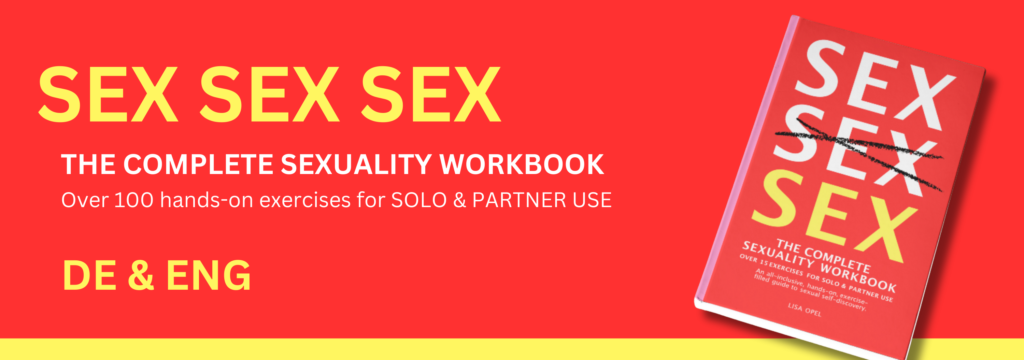Challenging stereotypes
Beyond the stereotypical: "men are always horny and women always have a headache"

2 min read
Navigate the complexities of sexual desire stereotypes in this insightful article. Explore how these clichés limit understanding and discover a more nuanced perspective on human intimacy. Including ten tips on how to talk about it.
In the realm of stereotypes, few are as ingrained as the notion that men are perpetually ready for action while women often claim to have a headache. Consequently, these clichés about sex drive not only oversimplify complex human experiences but also perpetuate harmful gender norms.
Let’s delve into the intricacies of sexual desire, challenging these stereotypes, and embracing a more nuanced perspective on the dynamics of human intimacy.
Breaking down the cliché:
The image of men being always horny and women feigning headaches oversimplifies the diverse range of desires that individuals of all genders experience. Humans are complex beings, and their sexual appetites vary across contexts, moods, and phases of life.
Beyond gender norms:
Placing expectations on individuals based on their gender perpetuates a harmful cycle of reinforcing societal norms. Desire isn’t solely dictated by biology; it’s influenced by emotions, physical well-being, psychological factors, and relationship dynamics. To assume that all men or all women adhere to these clichés denies their agency and individuality.
Embracing fluidity:
Above all, sexual desire isn’t binary; it’s a fluid spectrum that can change over time. Just as a person’s appetite for food can fluctuate, so can their desire for physical intimacy. By recognizing this fluidity, we allow space for individuals to embrace their ever-evolving needs and desires without judgment.
Communication and consent:
In other words, relying on clichés hinders open communication and mutual consent in relationships. Assuming that one partner is always ready and the other is perpetually disinterested disregards the importance of discussing desires, boundaries, and consent. True intimacy thrives when partners communicate openly and respect each other’s autonomy.
Shifting paradigms:
To dismantle these stereotypes, we must shift our focus from perpetuating clichés to nurturing understanding. It’s essential to engage in conversations that explore each person’s unique desires, preferences, and comfort levels, regardless of their gender identity.
Let’s talk about it (including ten tips on how to!):
Having open conversations about sexual desire clichés is crucial for dismantling harmful stereotypes and fostering healthier perspectives on intimacy. By discussing these clichés, we challenge outdated beliefs that often limit our understanding of human sexuality.
These conversations promote empathy, broaden our awareness of diverse experiences, and encourage individuals to share their personal stories. Breaking the silence around these topics creates a safe (or brave) space for people to express their thoughts, feelings, and challenges, ultimately paving the way for more respectful, informed, and meaningful connections.
Here are some conversation starters and ideas:
-
Personal Experiences: “Have you ever encountered or heard about the cliché that men are always in the mood and women often have headaches? What are your thoughts on this stereotype?”
-
Media Influence: “Movies and TV often perpetuate the idea that men are insatiable and women are uninterested. How do you think these portrayals affect our perceptions of real relationships?”
-
Open-Minded Conversations: “Let’s talk about sexual desire in relationships. Do you think the clichés about men and women’s desires align with reality? Share your perspective.”
-
Cultural Influence: “Clichés about sex drive can be deeply rooted in culture. How do you think these stereotypes impact people’s expectations and experiences?”
-
Communication in Relationships: “In relationships, it’s important to openly discuss desires and boundaries. How do these stereotypes affect conversations around intimacy?”
-
Gender Identity: “Sexual desire isn’t limited to gender. How do you think these clichés might affect individuals who don’t conform to traditional gender roles?”
-
Changing Dynamics: “Desires can change over time. Have you experienced shifts in your own sexual desires, and how do they challenge or align with these clichés?”
-
Breaking the Mold: “Let’s challenge the idea that all men are always ready and all women are uninterested. Can you share examples that defy these clichés?”
-
Learning and Growth: “Clichés limit our understanding. How can we educate ourselves and promote healthier conversations about sexual desires?”
-
Reshaping Narratives: “Let’s brainstorm ways to reshape the narratives around sexual desires. How can we encourage more open, respectful, and inclusive discussions?”
In short; stereotypes like “men are always horny and women always have a headache” fail to capture the intricate tapestry of human sexuality. Embracing a more nuanced perspective allows us to break free from limiting beliefs and embrace the richness of human desire.
By acknowledging the diversity of experiences and challenging gender-based assumptions, we pave the way for healthier, more respectful, and fulfilling connections – grounded in genuine communication, consent, and mutual understanding.
Watch one of my live readings with lots of banter and chat about these kinds of topics here.
Click on the button to load the content from open.spotify.com.
DID WE TOUCH A NERVE? SHARE THIS WITH YOUR FRIENDS (OR ENEMIES!) AND COMMENT BELOW!
© 2025 pleasepinchmehard. All rights reserved.













